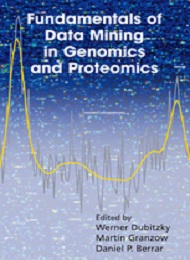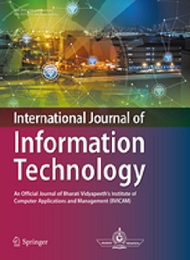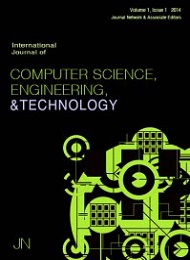Theme: “Future Technologies in Data Driven Approaches and Adaptionâ€
Big Data 2021
Conference Series is pleased to ask you to participate within the “World summit on Big Data , Machine Learning and Artificial Intelligence” . This conference bids an unparalleled opportunity to network with colleagues and learn from the distinguished leaders in Information Technology.
It is an International platform that brings together the collection of investigators who are at the forefront in the field of Information Technology. The scientific program will include oral presentations of sub-disciplines, keynote sessions led by eminent scientists and poster sessions presented interactively by junior scientists and graduate students. It is the last word forum for all the experts worldwide for brand spanking new interdisciplinary scientific collaborations and networking.
TRACKS:
Track 1: : Big Data
Big Data may be a collection of knowledge that’s huge in volume, yet growing exponentially with time. It is acknowledged with so large size and complexity that none of traditional data management tools can store it or process it efficiently. Big data is additionally a knowledge but with huge size.
Big Data is a field that treats ways to analyse, systematically extract information from, or otherwise deal with data sets that are too large or complex to be dealt with by traditional data-processing application software. Data with many fields (columns) offer greater statistical power, while data with higher complexity (more attributes or columns) may lead to a higher false discovery rate. Big Data analysis challenges include capturing data, data storage, data analysis, search, sharing, transfer, visualization, querying, updating, information privacy and data source. Big Data was originally associated with three key concepts: volume, variety, and velocity. The analysis of big data presents challenges in sampling, and thus previously allowing for only observations and sampling. Therefore, big data often includes data with sizes that exceed the capacity of traditional software to process within an acceptable time and value.
Track 2: Artificial Intelligence
Artificial Intelligence as a tutorial discipline was founded in 1956. The goal then, as now, was to get computers to perform tasks regarded as uniquely human things that required intelligence. Initially, researchers worked on problems like playing checkers and solving logic problems.
If you checked out the output of one of these checkers playing programs you will see some sort of “artificial intelligence ” behind those moves, particularly when the pc beat you. Early successes caused the primary researchers to exhibit almost boundless enthusiasm for the chances of AI, matched only by the extent to which they misjudged just how hard some problems were.
Artificial Intelligence refers to the output of a computer. The computer is doing something intelligent, so it’s exhibiting intelligence that's artificial. The term AI doesn’t say anything about how those problems are solved. There are many different techniques including rule-based or expert systems. And one category of techniques started becoming more widely utilized in the 1980s: Machine Learning
Track 3: Machine Learning
Machine Learning may be a method of knowledge analysis that automates analytical model building. It is a branch of AI supported the thought that systems can learn from data, identify patterns and make decisions with minimal human intervention.
The reason that those early researchers found some problems to be much harder is that those problems simply weren't amenable to the early techniques used for AI . Hard-coded algorithms or fixed, rule-based systems just didn’t work very well for things like image recognition or extracting meaning from text.
Types of Machine Learning
There are three important types of machine learning Algorithms that we will discuss in this tutorial –
• Supervised Learning
• Unsupervised Learning
• Reinforcement Learning
Machine Learning Classification
• Clustering – This model is created when there is a bunch of data available but didn’t have a determined outcome and just want to see distinctive patterns in the data.
• Regression – This model is created for the purpose of finding value. With the help of data, the algorithm can find associations between any two variables and the outcome is predicted accordingly.
Track 4: AI and Big Data
AI has ability to figure it out so well with data analytics is that the primary reason why AI and Big Data are now seemingly inseparable.AI , machine learning and deep learning are learning from every data input and using those inputs to get new rules for future business analytics. “Data is the lifeblood of AI .
Track 5: AI using Machine Learning
Artificial Intelligence may be a technology which enables a machine to simulate human behaviour. Machine Learning may be a subset of AI which allows a machine to automatically learn from past data without programming explicitly. The goal of AI is to form a sensible computing system like humans to unravel complex problems.
Track 6: Machine Learning on Big Data
Machine Learning algorithms become more effective as the size of training datasets grows. So when combining big data with machine learning, we benefit twice: the algorithms help us keep up with the continuous influx of data, while the volume and variety of the same data feeds the algorithms and helps them grow.
By feeding Big Data to a machine-learning algorithm, we might expect to see defined and analyzed results, like hidden patterns and analytics that can assist in predictive modelling.
For some companies, these algorithms might automate processes that were previously human-centred. But more often than not, a corporation will review the algorithm’s findings and search them for valuable insights which may guide business operations.
Here’s where people come back into the picture. While AI and data analytics run on computers that outperform humans by a huge margin, they lack certain decision-making abilities. Computers have yet to duplicate many characteristics inherent to humans, like critical thinking, intention and therefore the ability to use holistic approaches. Without an expert to supply the proper data, the worth of algorithm-generated results diminishes, and without an expert to interpret its output, suggestions made by an algorithm may compromise company decisions.
Track 7: Machine Learning Applications for Big Data
Let’s look at some real-life examples that demonstrate how Big Data and Machine Learning can work together.
A research firm has a large amount of medical data it wants to study, but in order to do so on-premises it needs servers, online storage, networking and security assets, all of which adds up to an unreasonable expense. Instead, the firm decides to invest in Amazon EMR, a cloud service that offers data-analysis models within a managed framework.
Machine Learning models of this sort include GPU (Graphics Processing Unit)-accelerated image recognition and text classification. These algorithms don’t learn once they are deployed, so they can be distributed and supported by a content-delivery network (CDN). Check out Live Ramp’s detailed outline describing the migration of a big data environment to the cloud.
While web scraping generates a huge amount of data, it’s worthwhile to note that choosing the sources for this data is the most important part of the process. Check out this IT Svit guide for some best data-mining practices.
Similarly, smart-car manufacturers implement Big data and machine learning in the predictive-analytics systems that run their products. Tesla cars, for example, communicate with their drivers and respond to externally stimulated by using data to make algorithm-based decisions.
Track 8: Deep Learning
• Deep Learning is an AI function that mimics the workings of the human brain in processing data for use in detecting objects, recognizing speech, translating languages, and making decisions.
• Deep Learning AI is able to learn without human supervision, drawing from data that is both unstructured and unlabelled.
• Deep Learning, a form of machine learning, can be used to help detect fraud or money laundering, among other functions.
Track 9: Working of Deep Learning
Deep Learning has evolved hand-in-hand with the digital era, which has brought about an explosion of data in all forms and from every region of the world. This data, known simply as big data, is drawn from sources like social media, internet search engines, e-commerce platforms, and online cinemas, among others. This enormous amount of data is readily accessible and can be shared through different applications like cloud computing.
However, the data, which normally is unstructured, is so vast that it could take decades for humans to comprehend it and extract relevant information. Companies realize the incredible potential that can result from unravelling this wealth of information and are increasingly adapting to AI systems for automated support.
Track 10: AI & Machine Learning in HealthCare and Medical Science
Artificial Intelligence in healthcare is employed to interpret the complicated medical and healthcare data by the use of machine learning algorithms and AI. Machine Learning is employed within the field of radiology to detect and diagnose diseases through computed tomography and resonance imaging. The identification of drug interactions in medical literature is often possible by improving the tongue processing. This electronic health record data helps to spot the symptoms of the patients.
Track 11: Big Data , Data Science And Data Mining
Big Data is a field that gets ways break down, systematically extract data from informational collections that are in predictable to be managed by conventional information handling application programming. Big Data challenges including capturing data, data storage, data analytics, search, representation, questioning, and refreshing the knowledge security.
Data Science is a field that joins all that is identified with the cleansing, preparation and last examination of information. Data science gives solutions to the programming, intelligent reasoning, number-crunching, and insights. It gets information within the fastest manner and supports the restriction of watching things with a substitute viewpoint.
Data Mining is essentially the way towards collecting information from the databases. We can process the data processing as a juncture of various fields like AI, data room virtual base management, pattern recognition, visualization of knowledge, machine learning, and statistical studies and so on.
Track 12: Automated Machine Learning
Automated Machine Learning belongs to the sector of knowledge science which refers to the method of applying machine learning to real-world problems. It was proposed as an artificial intelligence based solution to the ever-growing challenge of applying machine to utilize AI models and procedures without requiring turning into a specialist within the field first. It makes business in every industry like healthcare, financial markets, marketing, sports, manufacturing and lots of others applications.
Track 13: Benefits of Big Data
Big Data provides some benefits to all kinds of businesses across the globe. From the education sector to the healthcare industry, almost every industry is now sure to Big data Analytics in some or the opposite way. That’s why Data Flair has come with the 6 amazing benefits of Big data that you must know.
Below are the highest advantages of using Big data in business –
• Better decision making
• Greater innovations
• Improvement in education sector
• Product price optimization
• Recommendation engines
• Life-Saving application in the healthcare industry
Track 14: Big Data Tools
Big Data is just overlarge and sophisticated data that can't be addressed using traditional processing methods. Big data requires a group of tools and techniques for analysis to realize insights from it. There is variety of massive data tools available within the market like Hadoop which helps in storing and processing large data, Spark helps in-memory calculation, Storm helps in faster processing of unbounded data, Apache Cassandra provides high availability and scalability of a database, MongoDB provides cross-platform capabilities, so there are different functions of every Big data tool.
Here is that the list of top 10 big data tools –
• Apache Hadoop
• Apache Spark
• Apache Storm
• Apache Cassandra
• MongoDB
• Kafka
• Tableau
The global big data market size was valued at USD 25.67 billion in 2015 and is expected to witness significant growth over the forecast period. The elevating number of virtual online offices coupled with increasing popularity of social media producing an enormous amount of data is a major factor driving growth. Increased internet penetration owing to the several advantages including unlimited communication, abundant information and resources, easy sharing, and online services generates huge chunks of data in everyday life, which is also anticipated to propel demand over the coming years.
Market Share Insights
Manufacturers increasingly invest in R&D for developing integrated big data solutions in an attempt to offer increased capabilities. Purveyors are undertaking efforts to reduce hardware costs to achieve competitive advantage. Vendors are also expected to focus on mergers & acquisitions and venture funding ascribing to technology advancement and complex ecosystem.
High priority on gaining more precise information and best streamline sales cycles, simplify customer service, and gain superior insights into customer needs are the most common activities followed by notable industry participants.
Artificial Intelligence and Machine Learning Market growth
Markets forecasts the Artificial intelligence market to be valued at USD 21.46 billion in 2018 and is likely to reach USD 190.61 billion by 2025, at a CAGR of 36.62% during the forecast period. Major drivers for the AI market are growing big data, the increasing adoption of cloud-based applications and services, and an increase in demand for intelligent virtual assistants.
The AI market for hardware is expected to grow at a high CAGR during the forecast period. This can be attributed to the increasing need for hardware platforms with high computing power to run various AI software. The presence of major companies that contribute to the AI sector in North America has made the region a major market for hardware related to AI.
By technology, the artificial intelligence market for computer vision holds the largest share of the market.
Machine learning’s ability to collect and handle big data, and its applications in real-time speech translation, autonomous robots, and facial analysis are fuelling its growth. The growing adoption of computer vision in autonomous or semiautonomous applications in various industries, such as manufacturing and automotive, is propelling the growth of this technology in the AI market.
Graphical Representation of Regional growth in Asian Countries
Growth in Big Data
Big data and artificial intelligence market are becoming part of business organizations driven by the availability of data from sources such as the Internet of Things .Nowadays, companies are striving to analyse the consumer data obtained from CRM systems, product reviews, and media comments to understand their customers at a granular level, making their marketing more targeted and effective. Digitization in the manufacturing industry has increased the capability to access, analyse, and manage vast volumes of data while rapidly developing the information architecture in the factory. Data plays a critical role in the successful operation of a manufacturing plant. A strongly coupled digitized system in the manufacturing industry improves the overall quality and reduces the cost by improving defect tracking and forecasting abilities. By analysing the data, AI market systems can draw conclusions on the machine’s condition and detect irregularities to provide predictive maintenance.
Conference Highlights
- Big Data
- Artificial Intelligence
- Machine Learning
- AI and Big Data
- AI using Machine Learning
- Machine Learning on Big Data
- Machine Learning Applications for Big Data
- Deep Learning
- Working of Deep Learning
- AI & Machine Learning in Health Care and Medical Science
- Big Data, Data Science and Data Mining
- Automated Machine Learning
- Benefits of Big Data
- Big Data Tools
To share your views and research, please click here to register for the Conference.
To Collaborate Scientific Professionals around the World
| Conference Date | September 17-18, 2021 | ||
| Sponsors & Exhibitors |
|
||
| Speaker Opportunity Closed | |||
| Poster Opportunity Closed | Click Here to View | ||








